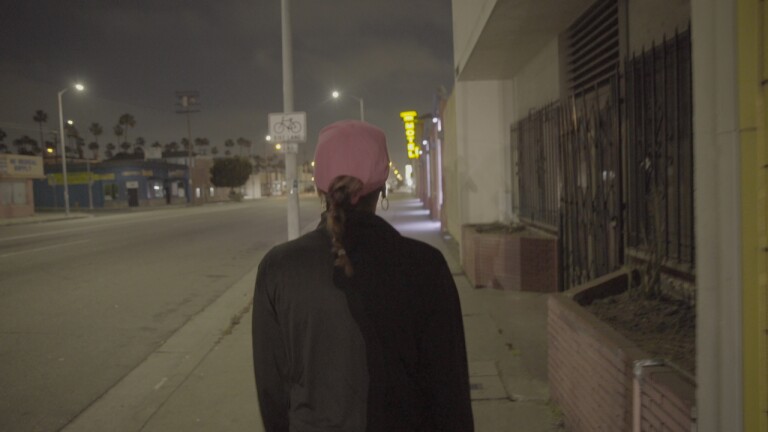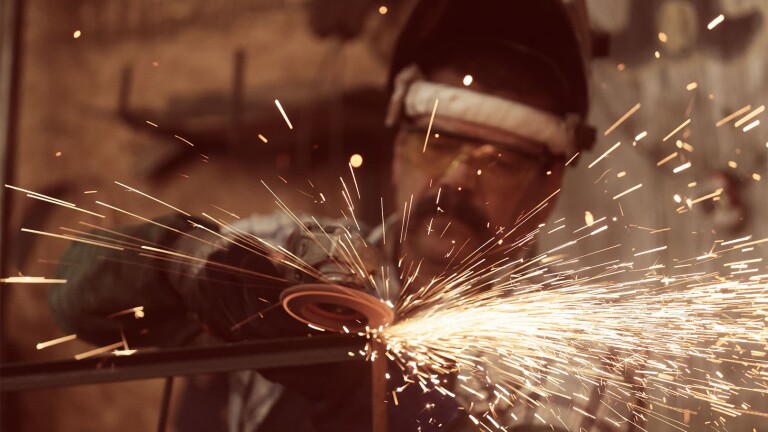Giants in Danger
TRANSCRIPT:
Val Zavala: And now to a very different story about what happens when man and nature collide, literally. The victims — whales. They're being threatened by something many times larger than themselves. It's a gruesome encounter that leaves too many of these animals mutilated and dead. Correspondent Jennifer London reports from the waters off Southern California.
Jennifer London: They are bigger than any dinosaur that ever lived — giants of the deep.
Kera Mathes/Aquarium of the Pacific: The blue whale is the largest animal in the world. They get up to around 320,000 pounds. So, it's just amazing these majestic animals that are right here off of Southern California and we have this unique opportunity to go out there and watch them do what they do.
There he is right here on the right. Right now, we are headed to the open ocean looking for blue whales.
London: Aquarium of the Pacific biologist Kera Mathes leads research tours in Long Beach. She says whale watching has never been better.
Mathes: Just a huge breach. Did you see that? Oh!!
London: On the day we went out with Mathes, we saw a fin whale, the second — largest of the species — leap straight up out the water.
Mathes: That’s a fin whale breaching! Oh my gosh!
London: Mathes says it’s quite rare to see a fin whale breach because of its massive size, so we got lucky. But, in general, the reason for the increase in whale sightings, across all species, is very simple...
Mathes: Over the last 10 years or so there has been a shift in the krill and we have had a lot more krill in the area and they’re always going to go where the food is.
London: Scientists aren’t sure what is causing the increase in krill, the tiny shrimp-like creatures whales feed on. It could be related to climate change. Whatever the reason, seeing so many blue whales so close to shore is certainly a delight for sightseers. But for the whales, it can be deadly.
That’s because Southern California is also home to the busiest shipping port in the country. Think of it like this — these massive endangered mammals are dining on the marine equivalent of the 405. And when whales and ships collide, it never ends well for the whale.
Consider this incredible picture of a 62-foot fin whale draped across the bow of a tanker in Long Beach. It’s believed the whale was killed after being struck by the ship.
Mathes: The container ships are very large and they’re moving at a good speed. When these ships come through, the propellers will actually sever their spines.
London: According to the National Oceanic and Atmospheric Administration, in the past 10 years 61 whales have collided with ships off the coast of California.
Four blue whales were killed in 2007, believed to have been struck near the Channel Islands.
Off the coast of San Diego, this 67-foot long pregnant fin whale washed ashore in November. She and her unborn calf were killed by a ship strike. Scientists believe her vertebrae were fractured by the force of the strike.
Monica DeAngelis/Marine Mammal Biologist, NOAA: We are getting more reports of animals being hit and I think it’s because they are closer to shore and more people are out on the water seeing them, but I think it's also a reality that we are seeing more animals being struck as well.
London: And, the sad truth, according to scientists — those official numbers may be only a fraction of the true tally.
John Calambokidis/Research Biologist, Cascadia Research: We think the number is much higher than that because most whales, when they die, sink, and so they would never be discovered. Our main estimate is this blue line right here...
London: John Calambokidis is a biologist with the Cascadia Research Collective in Washington State. He's spent decades studying marine mammals with a focus on the endangered blue whales.
This footage shows his team affixing a suction cup tag to whales off the coast of Southern California. A close approach like this is only legal with a research permit from the national marine fisheries service, and it’s dangerous, even for experts. But the tags are hugely valuable for scientists, yielding vital information about California’s blue whale population.
Calambokidis: In the early part of our research we found that there was actually a healthier blue whale population than we thought existed. We identify individual whales and we identified almost 2,000 different individuals. But then over the last 20 years we haven’t seen any increase in those numbers. We don’t know the exact reason why they’re not increasing, but one of the things we’re very concerned about is ship strikes as a potential cause.
London: Blue whales only have a baby about once every two years, so losing a female of calf-bearing age due to ship strikes could have real consequences for the fragile population.
And Calambokidis says his research shows the whales’ behavior can make this dangerous and often times deadly situation even worse.
Calambokidis: We don’t see any indication of the whales avoiding the ships. So our early indications are they’re not avoiding the ships and they may react in ways that are counterproductive, and that may be why this species in particular is so vulnerable.
London: This image represents tagging data collected just off the coast of Long Beach. The colored dots show the movements of whales feeding right in the shipping lanes, indicated by the white lines.
London [Stand Up]: Some of data collected by researchers indicates that during the day the whales have a tendency to feed outside of port and can sometimes dive as deep as a thousand feet. But at night the whales tend to move closer to shore and spend more time at the surface, which means they are nearly twice as likely to be struck by a ship.
London: So, what, if anything, can be done to protect these magnificent marine mammals?
The U.S. Coast Guard recently released a study that recommends changing the shipping lanes for container vessels near the Channel Islands, where those blue whales were killed in 2007.
Lt. Cmdr. Frances Fazio/U.S. Coast Guard: If the recommendation does get accepted, then vessel traffic will be further from the Channel Islands and hopefully that will help in preserving the marine environment.
London: But the coast guard’s report stopped short of calling for changes in ship speed, which some environmentalists wanted.
Calambokidis: There’s scientific data — mostly from the East Coast and other areas — that if you slow ships down and there is a ship strike, it is less likely to kill the whale.
London: T.L. Garrett, of the Pacific Merchant Shipping Association, disagrees. He says the science doesn’t yet support the idea that a ship slowdown will be safer for whales in our coastal waters. What he does know is a forced slowdown would cost the industry plenty.
T.L. Garrett/V.P., Pacific Merchant Shipping Assoc.: Time is money. Any reduction in vessel speed coming in and out of the Santa Barbara Channel would result in additional cost.
London: Of course, Garret says, ship captains would prefer to steer clear of marine life all together.
Garrett: I can't imagine anything more tragic than a vessel striking a whale. And I'm sure that...and every ship master that I've spoken to on this issue, they're just heartsick at the very concept that it could potentially happen.
London: But on such enormous vessels, some close to 1,000 feet long, even the blue whale, the largest animal in the world, is nearly impossible to see.
Garrett: If you have ever been on a modern container vessel, they are several stories above the water level. The bridge is usually far back. And the master of the vessel is usually looking over rows and rows of containers as he looks out to sea.
London: Still, Calambokidis is hopeful for the whales' future.
Calambokidis: I’m really encouraged by what the Coast Guard’s doing. Proposing shifting the shipping lanes largely in response to trying to move them away from areas of whale concentration, that’s a key step. So I think if we do those things, we can find ways to make that work.
London: And finding ways to make that work is imperative to safeguard these giants of the deep.
I’m Jennifer London, for SoCal Connected.






















